Welcome to a captivating journey through time as we delve into the ancient allure of The Ziggurats. These monumental structures, often referred to as Towers to the Heavens, hold a significant place in the history of human civilization. Join us as we uncover the secrets and unravel the mysteries surrounding these awe-inspiring architectural marvels.

Key Takeaways:
- The Ziggurats were monumental structures built in ancient civilizations to reach the heavens.
- They served important religious and societal functions, symbolizing the connection between the earthly and the celestial realms.
- The construction techniques employed to build The Ziggurats were sophisticated, allowing them to withstand the test of time.
- Ancient Mesopotamia and the Middle East were the predominant locations where these towering structures were found.
- Today, The Ziggurats continue to captivate tourists and preserve the cultural heritage of the regions they are located in.
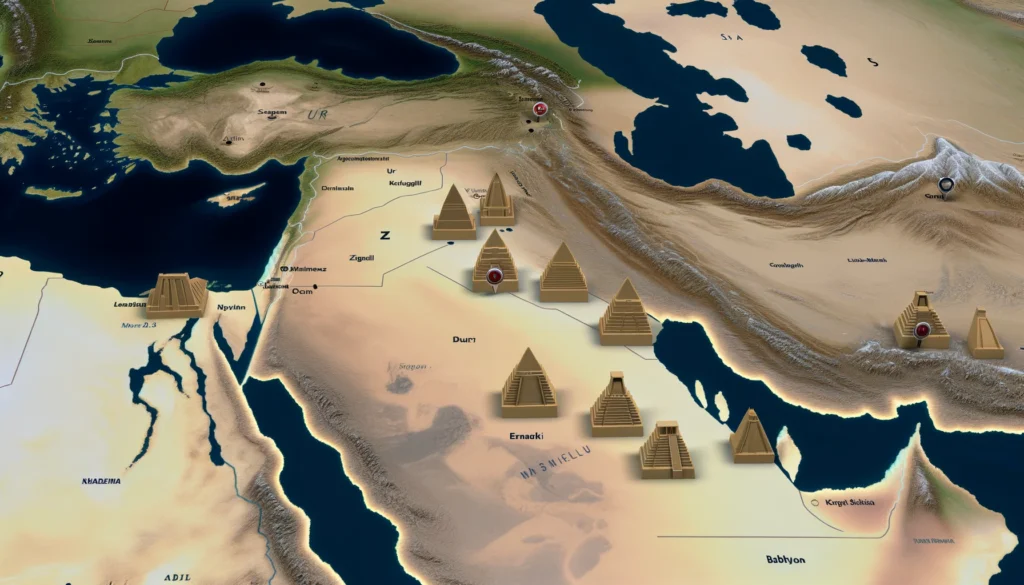
Understanding The Ziggurats

To truly appreciate the ancient allure of The Ziggurats, it is essential to understand their history and cultural context. Built by ancient civilizations, these architectural marvels were not just towering structures, but symbols of religious and societal significance.
The civilizations that constructed The Ziggurats were masters of architecture, creating awe-inspiring structures that stood as a testament to their engineering prowess. These towering edifices were characterized by their step-like structure, with each level dedicated to a specific religious purpose or societal function.
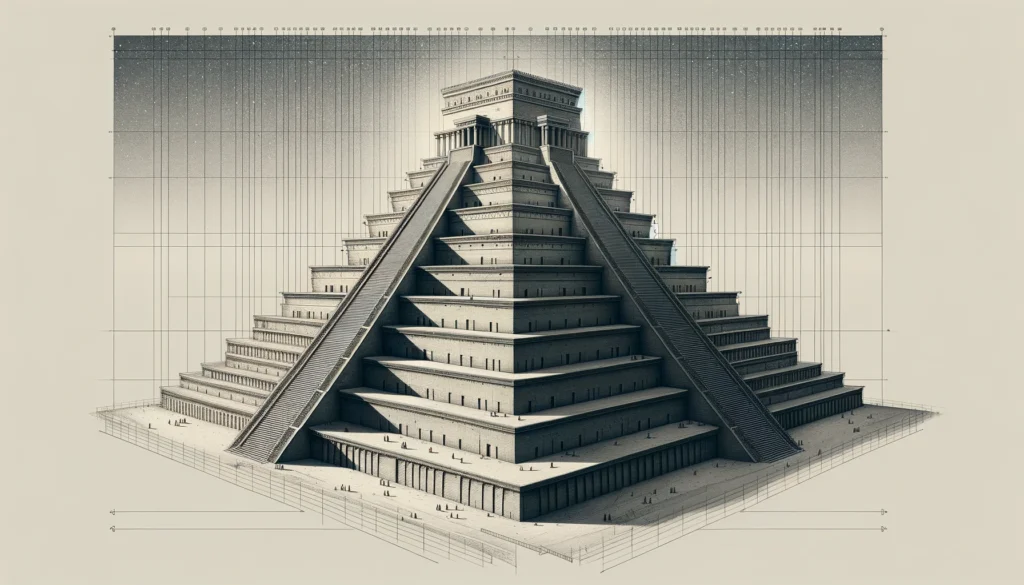
The Ziggurats served as sacred temples and were believed to be the meeting place between the earthly realm and the heavens above. They were dedicated to various deities worshipped by the ancient civilizations, and their construction involved meticulous planning and intricate designs.
“The Ziggurats were not just architectural wonders, but also cultural symbols of their time. They represented the connection between the physical and spiritual worlds, and were central to the religious practices of ancient civilizations.” – Dr. Elizabeth Johnson, Archaeologist
These monumental structures were built using ancient construction techniques, combining clay bricks, bitumen, and mud mortar. The stepped design of The Ziggurats provided stability and allowed them to withstand the test of time, despite being exposed to harsh environmental conditions for thousands of years.
Architectural Features of The Ziggurats:

- The stepped structure gradually ascended towards the top, often reaching several stories high.
- A central staircase leads to the top of the ziggurat, providing access to the temple.
- Outer walls decorated with intricate patterns and reliefs, depicting scenes from mythological and religious narratives.
- A flat rooftop platform where rituals and ceremonies take place.

The Ziggurats were not only religious centers but also icons of power and authority, dominating the ancient cityscapes where they were built. They stood tall as a testament to the ambitions and achievements of the civilizations that erected them.

By understanding the historical and architectural significance of The Ziggurats, we can gain deeper insights into the ancient civilizations that thrived in Mesopotamia and the surrounding regions. These architectural marvels continue to fascinate us and serve as a link to our ancient past.
Construction and Design of The Ziggurats
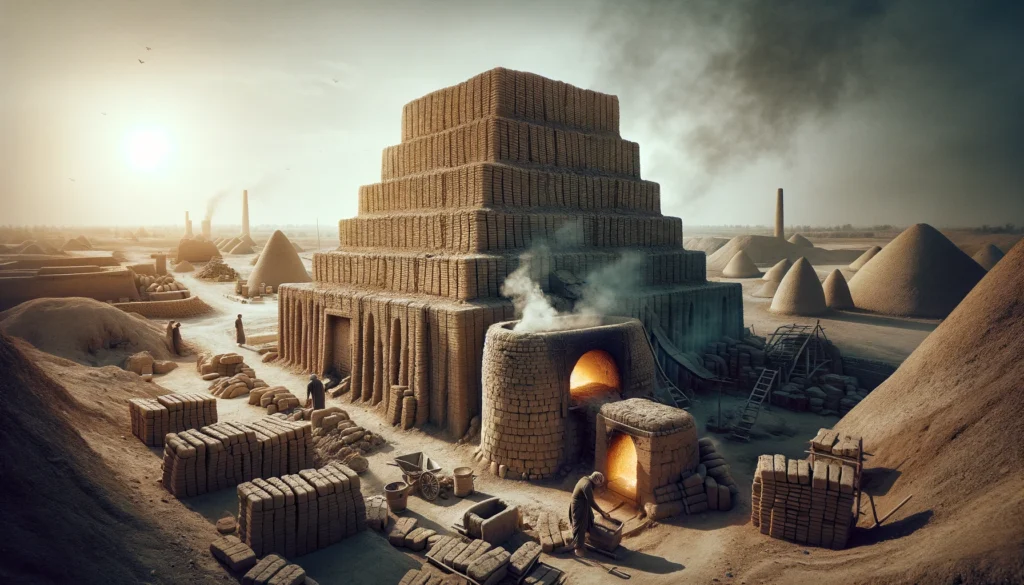
When it comes to the construction of The Ziggurats, ancient civilizations utilized impressive techniques and incorporated symbolic elements into their design. These remarkable structures were built to stand the test of time, with engineering marvels that continue to fascinate and inspire.
The construction techniques employed by these civilizations showcased their advanced knowledge of architecture and engineering. One notable technique was the use of baked mud bricks, which were assembled in layers to form the massive structure of The Ziggurats. This method allowed for stability and durability, enabling these towering monuments to withstand the passage of centuries.

Symbolic elements were integral to the design of The Ziggurats, reflecting the religious and cultural beliefs of the ancient civilizations. The most prominent feature was the stepped structure, which represented a symbolic ascent to the heavens, bridging the gap between earth and sky. Each level of the ziggurat held a specific purpose, whether it be for worship, ritual ceremonies, or housing sacred artifacts.
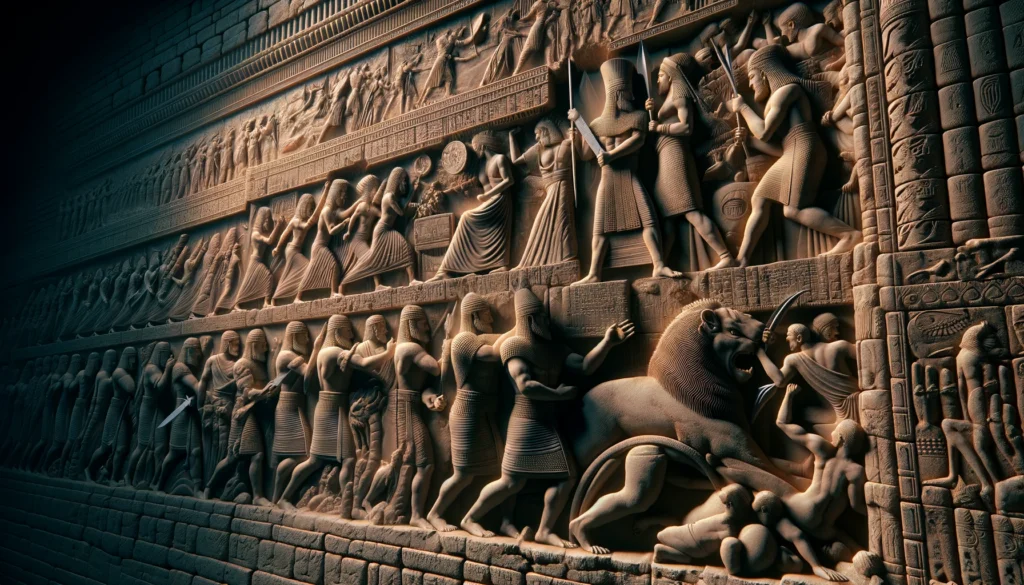
The design of these monumental structures also incorporated intricate carvings and decorations, depicting mythological scenes and deities. These symbolic embellishments added an awe-inspiring beauty to The Ziggurats, further emphasizing their divine connection and spiritual significance.
“The construction techniques and symbolic elements used in The Ziggurats reflect the advanced knowledge and spiritual beliefs of ancient civilizations.”
The Construction Techniques:

- Use of baked mud bricks
- Layered assembly for stability
The Symbolic Elements:
- Stepped structure representing ascent to heavens
- Intricate carvings and decorations depicting mythological scenes and deities
Comparison of Construction Techniques and Symbolic Elements in The Ziggurats
| Construction Techniques | Symbolic Elements |
|---|---|
| Use of baked mud bricks | Stepped structure representing ascent to heavens |
| Layered assembly for stability | Intricate carvings and decorations depicting mythological scenes and deities |
Purpose and Function of The Ziggurats

The Ziggurats held immense religious significance for the ancient civilizations that built them. These monumental structures were not only architectural marvels but also served as sacred spaces connecting the earthly realm with the celestial sphere.
The primary function of The Ziggurats was to establish a spiritual connection between humanity and the divine. The ancient people believed that by constructing these towering edifices, they could reach closer to the heavens and communicate with the gods.

The Ziggurats were considered to be the literal and metaphorical bridges between the physical and spiritual worlds. They were believed to be the sacred abodes of the deities, where humans could worship and offer sacrifices to gain favor and divine intervention.
These celestial connections were reinforced through intricate rituals and ceremonies performed on top of the Ziggurats. Priests and priestesses would ascend the stepped terraces to conduct religious rites, offer prayers, and seek divine guidance.
By being physically closer to the gods, the people believed that they could receive blessings, protection, and forgiveness for their transgressions. The Ziggurats became symbols of hope and faith, central to the religious fabric of ancient societies.

The religious significance of The Ziggurats extended beyond individual worship. They served as communal centers, bringing people together to participate in religious festivals, processions, and other important cultural events.
| Religious Significance of The Ziggurats | Celestial Connections |
|---|---|
| Established spiritual connection between humanity and the divine | Symbolized the bridge between physical and spiritual realms |
| Believed to be the sacred abodes of the deities | Enabled humans to communicate with the gods |
| Avenues for worship, prayer, and rituals | Represented hope, faith, and divine protection |
| Communal centers for religious festivals and events | Connected people through shared religious experiences |
Locations of The Ziggurats
Discover the geographical locations where The Ziggurats, these awe-inspiring ancient structures, were predominantly found. The Middle East, particularly ancient Mesopotamia, was home to numerous cities that boasted these towering marvels.
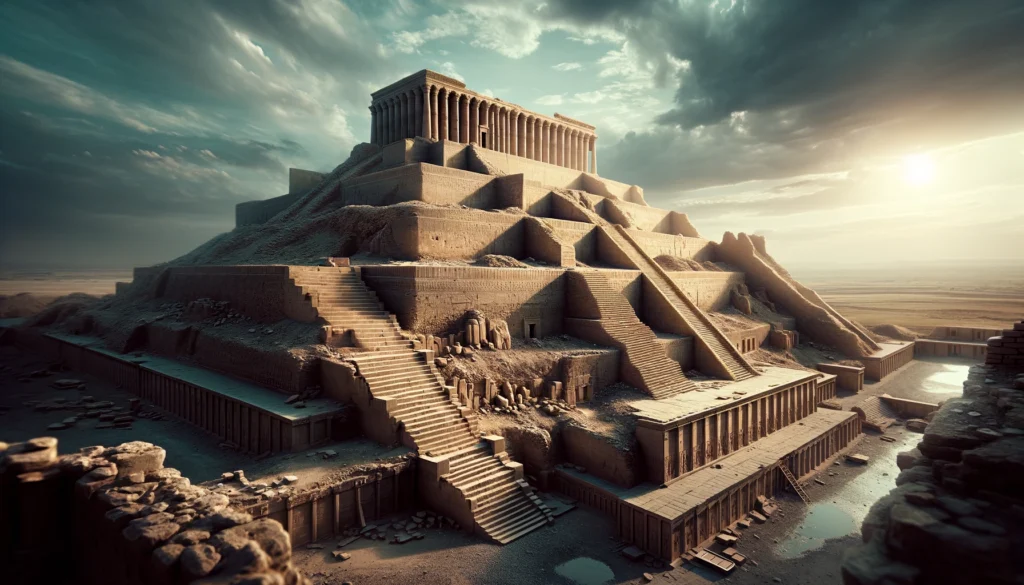
In Mesopotamia, one of the earliest cradles of civilization, several Ziggurats adorned the landscape. The region’s fertile land between the Tigris and Euphrates rivers provided the perfect setting for these monumental structures.

The city of Ur, located in present-day Iraq, was renowned for its magnificent Ziggurat, which was dedicated to the moon god Nanna. Standing at approximately 70 feet high, the Ziggurat of Ur was a testament to the architectural prowess of the ancient Mesopotamians.

Another notable city in Mesopotamia with a Ziggurat was Babylon. The Ziggurat of Babylon, known as the Etemenanki, was a symbol of the city’s power and prestige. Built by King Nebuchadnezzar II, this colossal structure reached a height of over 300 feet and was considered one of the Seven Wonders of the Ancient World.
Beyond Mesopotamia, The Ziggurats also found their place in other ancient cities of the Middle East. In the city of Susa in present-day Iran, the Ziggurat of Chogha Zanbil stood as a testament to the Elamite civilization. This well-preserved structure, with its seven tiers, remains a fascinating archaeological site to this day.
Let’s take a closer look at the cities and regions associated with The Ziggurats:
| City/Region | Country |
|---|---|
| Ur | Iraq |
| Babylon | Iraq |
| Susa | Iran |
Rediscovery and Preservation Efforts

Rediscovering and preserving The Ziggurats is a painstaking process that involves the expertise of archaeologists and the collaboration of various organizations. Through careful excavation and meticulous restoration, ancient archaeological sites are brought back to life, giving us valuable insights into the past.
The excavation of archaeological sites is a delicate and time-consuming task. Archaeologists use a combination of traditional techniques and modern technology to uncover the hidden treasures buried beneath the earth. Tools such as brushes, trowels, and sieves are used to carefully remove layers of soil, revealing ancient artifacts and structures.

Restoration plays a crucial role in preserving the integrity of The Ziggurats. It involves repairing damaged sections, stabilizing the structures, and protecting them from further deterioration. Skilled professionals meticulously assess the condition of the ancient site, employing specialized techniques to bring these architectural wonders back to their former glory.
“Through excavation and restoration, we are able to piece together the fragments of the past and gain a deeper understanding of ancient civilizations. It is a labor of love and a responsibility to our collective history.”- Dr. Elizabeth Wilson, Lead Archaeologist

Archaeological sites are not only valuable for their historical and cultural significance but also for the economic benefits they bring to local communities. Many archaeological sites, including The Ziggurats, have become popular tourist attractions, attracting visitors from around the world. Revenue generated from tourism helps fund further excavation and preservation efforts, ensuring the continued conservation of these ancient wonders.
Table: Excavation and Restoration Techniques
| Excavation Techniques | Restoration Techniques |
|---|---|
| Manual excavation using brushes, trowels, and sieves Remote sensing techniques, such as ground-penetrating radar and LiDAR Archaeological surveys and mapping | Structural stabilization using modern materials Conservation of ancient materials and artifacts Reconstruction of damaged sections |
The combination of excavation and restoration ensures that archaeological sites like The Ziggurats are preserved for future generations. By studying and protecting these ancient structures, we gain a deeper appreciation for the rich history and cultural heritage of the civilizations that came before us.
Influences and Legacy of The Ziggurats
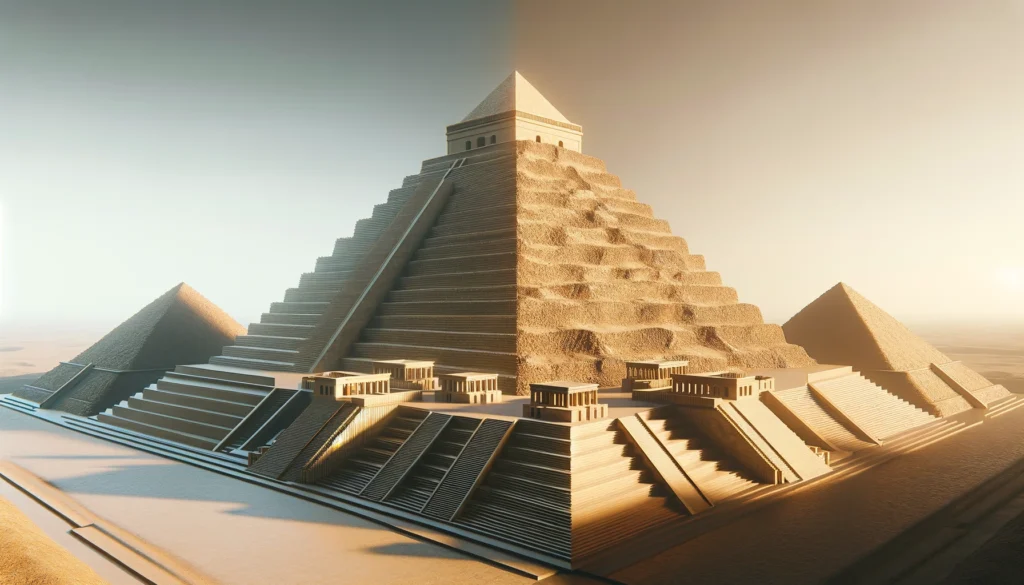
The Ziggurats, with their grandeur and architectural marvel, continue to leave their mark on modern structures and inspire awe in people today. The legacy of these ancient wonders extends far beyond their original purpose, shaping the world of architecture and design in profound ways.
Architectural Influence

The architectural influence of The Ziggurats is undeniable. These towering structures, with their stepped shapes and imposing presence, have served as a blueprint for countless architectural masterpieces throughout history. From the grand temples of Egypt to the stepped pyramids of Central America, traces of The Ziggurats’ design can be seen in various cultures around the world.
“The Ziggurats have left an indelible mark on architectural history. Their distinctive stepped construction and monumental scale have inspired architects for centuries, influencing the design of iconic structures such as the Pyramids of Giza and the Mayan temples.”
The symbolic elements incorporated into The Ziggurats’ design, such as the worship chambers and sacred staircases, have also influenced religious and sacred architectural spaces. The spiritual aura surrounding these ancient structures continues to inform the design of modern places of worship, infusing them with a sense of divine connection.
Continued Awe and Inspiration
The Ziggurats, with their historical significance and architectural splendor, continue to captivate people of all ages. Despite the passage of time, these ancient structures stand as a testament to human ingenuity and perseverance in the face of monumental challenges. Visitors from around the world flock to witness the awe-inspiring beauty of The Ziggurats and gain a deeper understanding of our shared heritage.
“The Ziggurats’ enduring allure lies in their ability to transport us to an ancient world, where humans aspired to reach the heavens through monumental architecture. Their legacy serves as a reminder of the heights we can achieve when we combine creativity, craftsmanship, and a vision for the extraordinary.”
Modern structures that draw inspiration from The Ziggurats often aim to evoke a sense of timelessness and grandeur. By incorporating elements such as stepped designs, terraces, and intricate detailing reminiscent of The Ziggurats, architects strive to create structures that evoke a sense of wonder and pay homage to the giants of the past.
Cultural Significance of The Ziggurats Today

Today, The Ziggurats hold immense cultural significance, attracting tourists from all around the world. As awe-inspiring remnants of ancient civilizations, these monumental structures play a crucial role in historical tourism, offering visitors a unique opportunity to step back in time and explore the rich cultural heritage of the regions where they are located.
By visiting The Ziggurats, tourists can immerse themselves in the history and traditions of ancient societies, marveling at the architectural marvels that have stood the test of time. These towering structures, with their intricate designs and symbolic elements, serve as living testaments to the skills and ingenuity of the civilizations that built them. From Mesopotamia to the Middle East, each region has its own stories to tell through The Ziggurats, providing a glimpse into the beliefs and customs of the past.

Moreover, The Ziggurats contribute to the preservation of cultural heritage, ensuring that the knowledge and traditions of ancient civilizations continue to be passed down through generations. These structures are not only historic landmarks but also symbols of identity for the communities that consider them part of their heritage. The ongoing efforts in the excavation, restoration, and preservation of archaeological sites surrounding The Ziggurats reflect the collective commitment to safeguarding and celebrating our shared cultural legacy.
“Visiting The Ziggurats is like embarking on a journey through time. You can’t help but be captivated by the ancient allure and historical significance of these towering structures. It’s a chance to connect with our past and gain a deeper understanding of the cultural heritage that shapes us today.”- Emily Thompson, Historical Tourism Enthusiast
With their profound cultural significance and ability to inspire awe, The Ziggurats remain key attractions for travelers seeking to delve into the mysteries of the past. They offer a unique blend of architectural beauty, historical context, and spiritual connections, making them must-visit destinations for enthusiasts of historical tourism and cultural exploration.
| Region | Ziggurat Name | Location |
|---|---|---|
| Mesopotamia | Ziggurat of Ur | Ur, Iraq |
| Mesopotamia | Ziggurat of Nanna | Ur, Iraq |
| Mesopotamia | Ziggurat of Eridu | Eridu, Iraq |
| Elam | Chogha Zanbil | Susiana, Iran |
| Assyria | Assyrian Ziggurat | Nimrud, Iraq |
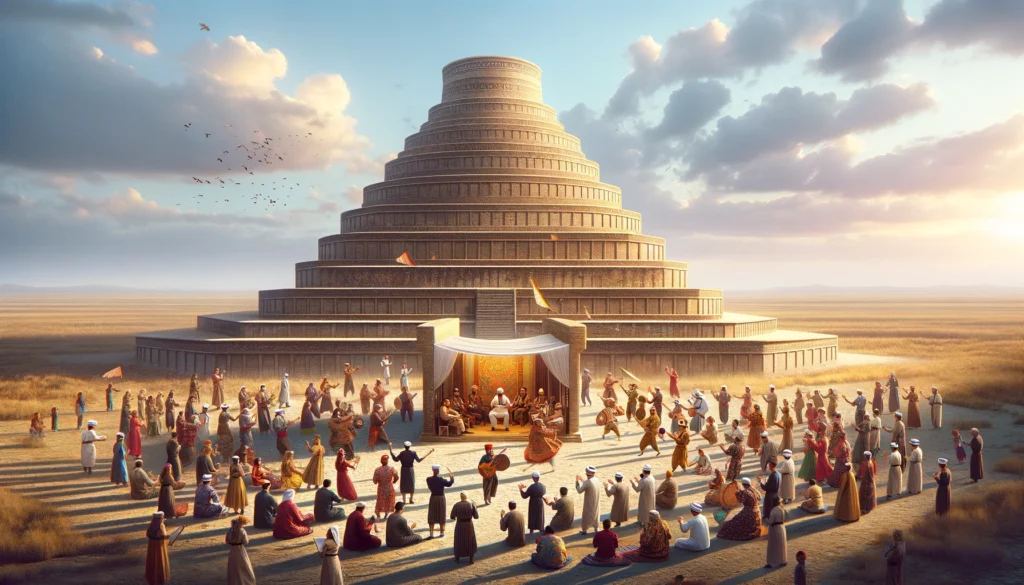
Conclusion
Throughout this exploration of The Ziggurats: Towers to the Heavens, we have unveiled the historical, architectural, and cultural significance of these ancient structures that have captured the imagination of people for centuries.
The Ziggurats stand as testaments to the grandeur and ingenuity of ancient civilizations. These imposing towers, built by hand using remarkable engineering techniques, served as symbols of religious devotion and connections to the divine. They were constructed with precision and designed with intricate symbolic elements that reflected the beliefs and values of their respective societies.
Today, The Ziggurats continue to inspire awe and fascination. They have left an indelible mark on architectural design, influencing the construction of modern structures. Excavation and restoration efforts have allowed us to rediscover these ancient wonders and preserve their cultural heritage for future generations.
As historical landmarks and popular tourist attractions, The Ziggurats offer us a tangible link to the past, providing insights into the lives and beliefs of those who came before us. Their significance goes beyond their physical presence; they serve as reminders of the rich tapestry of human history and the enduring pursuit of connection between the earthly and the divine.
FAQ
What were The Ziggurats?
The Ziggurats were monumental structures built in ancient civilizations to reach the heavens. They were impressive towers that held significant cultural and religious significance.
Which ancient civilizations built The Ziggurats?
The Ziggurats were primarily built by ancient civilizations in Mesopotamia, such as the Sumerians, Babylonians, and Assyrians. These civilizations saw The Ziggurats as architectural marvels and symbols of their power and connection to the divine.
What were the construction techniques used to build The Ziggurats?
The construction techniques used to build The Ziggurats varied across different civilizations. However, most of them were constructed using baked brick and had a stepped or terraced design. The ancient builders employed intricate engineering methods to ensure stability and longevity.
What purposes did The Ziggurats serve?
The Ziggurats served multiple purposes, with the main one being religious. They were believed to be gateways between Earth and the heavens, connecting humans to the divine. They were also used as ceremonial and administrative centers and symbols of power and prestige.
Where were The Ziggurats predominantly located?
The Ziggurats were predominantly found in ancient Mesopotamia, which is located in the modern-day Middle East. Cities like Ur, Babylon, and Nineveh were home to some of the most famous and well-preserved Ziggurats.
How have The Ziggurats been rediscovered?
Archaeologists have rediscovered The Ziggurats through extensive excavation efforts. By carefully digging through ancient ruins and uncovering layers of history, they have revealed these ancient wonders to the world.
Are The Ziggurats still standing today?
While some Ziggurats have undergone significant deterioration over time, there are still a few that remain partially standing or have been partially restored. These ancient structures serve as reminders of the past and attract visitors from around the world.
Have The Ziggurats influenced modern architecture?
Yes, The Ziggurats have had a profound influence on modern architecture. Their stepped design and the concept of building upwards towards the heavens have inspired architects throughout history. Elements of Ziggurat design can be seen in various structures around the world.
What is the cultural significance of The Ziggurats today?
The Ziggurats hold immense cultural significance in the present day. They are important historical sites that attract tourists and researchers, contributing to the understanding and preservation of ancient civilizations. They also play a crucial role in showcasing the cultural heritage of the regions where they are located.

